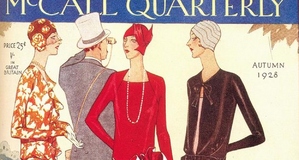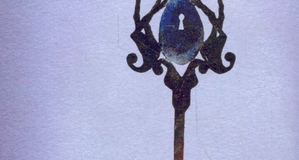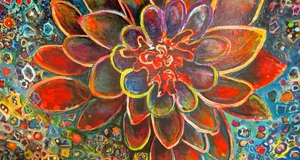"Beauty and the Beast" and "The Tiger's Bride": To Be or Not To Be a Beast?
By
2011, Vol. 3 No. 01 | pg. 1/1
KEYWORDS:
Madame de Beaumont's Beauty and the Beast and Angela Carter's The Tiger's Bride delve into the nature of men and women and the relationships between them by exploring and analyzing the motifs of wildness and civilization. Thus, women are presented as the civilizing agent in the relationship with men, who succumb to their "beastliness," giving way to their animalistic, wild side in Madame de Beaumont’s Beauty and the Beast, while in Angela Carter’s The Tiger’s Bride, the reverse is true—women are the ones who open up to the beast in them in relationship with men, instead of being the civilizing agent. This is illustrated in the relationship between the Beauty (representing women) and the Beast (representing men) and less so between Beauty and her father. In Madame de Beaumont’s story, Beauty chooses to go in her father’s place to the palace of the Beast and die (De Beaumont 35), while Angela Carter’s Beauty is handed over by her father as part of a game of cards that he had lost to the Beast (Carter 51). Thus, it is clear from the beginning that to be a woman involves a degree of passivity and dependency on a man (in this case the father). And although it could be argued that this dependency is almost natural, considering that the man they depend on is their parent, and any child depends on their parents until he/she is able to sustain himself/herself, the way the two women react to the new masculine figure (the Beast) does speak about the author’s professed understanding of the relationship between genders. De Beaumont’s Beauty chooses to take her father’s place in the claws of the Beast, more out of kindness and concern for the father (De Beaumont 35) than out of pure courage and indifference towards life. This can be seen in the fact that she is frightened at the sight of the Beast: “The monster asked her if she had come of her own free will and, trembling, she replied that she had” (De Beaumont 37). Eventually she becomes gradually relaxed in front of the treatment of the Beast: when she finds out she can check on her family by looking in the mirror, she “could not help thinking that the beast was most obliging and that she had nothing to fear from him” (De Beaumont 38). Beauty’s kindness, acknowledged by the Beast (De Beaumont 37), determines the Beast’s kindness. He gives Beauty the mirror and acts most gallantly towards her: “You are very kind. […] I swear to you that I am completely pleased with your good heart” (De Beaumont 37-38). On the other hand, Carter’s Beauty is not afraid, only slightly sarcastic and analytical: “my senses were increasingly troubled of the fuddling perfume of Milord […] there was a crude clumsiness about his outlines […]; and he has an odd air of self-imposed restraint […] he wears a mask with a man’s face painted most beautifully on it” (Carter 53). Beauty’s sarcasm and cynicism responds to her father’s cynicism and folly at gambling his own daughter.In Madame de Beaumont’s story, Beauty’s kindness and gentleness are answered with the same measure of kindness and gentleness. When Beauty is bored, the Beast provides her with books, a hapsicord and a splendid castle (De Beaumont 37), which only emphasizes his wealth and independence, compared to Beauty’s lack of wealth and dependence. When she wishes to see her father, she finds the mirror that shows her the safe arrival of her father (De Beaumont 37). Also, when she first dines and trembles at hearing the Beast approaching, she does muster her gentleness again and contends that he is her master and can watch her dine, in response to his request (De Beaumont 38). It is interesting to observe that to this the Beast mirrors her answer, by saying that “No, you are the only mistress here,” taking on her gentleness and manners (De Beaumont 38). Moreover, when Beauty asserts that the Beast is a monster but he is kind and this can hardly be said by other men who have beautiful appearances but hard hearts, the Beast wants to repay her with a compliment-and what better compliment than to say “I would pay you a great compliment to thank you. But I am so stupid that all I can say is that I am very much obliged” (De Beaumont 38). Finally, even if the Beast’s request of marrying him scares her at first and she refuses him (De Beaumont 38), Beauty finds a gentle and kind way of explaining him that she would like him to accept only the friendship between them (De Beaumont 39). Again, the Beast mirrors her behavior, his insistence subsides, and he even allows her to leave and see her father, who is sick: “I would rather die myself than cause you pain […] I will send you back to your father” (De Beaumont 39). Beauty’s self-sacrifice is thus mirrored in the Beast’s behavior. In this mirroring effect, it is shown how Beauty is the civilizing agent of the Beast, although the Beast’s need for a civilizing agent is very subtle and not dwelt upon by the author, since the nature of his beastliness is not described in specific terms. However, it is obvious that part of what makes him a Beast is his violence: he is ready to kill Beauty’s father just because the latter took a rose from the Beast’s garden (De Beaumont 35). This also shows he is active (he demands a daughter) and in control. Another aspect of his beastliness is much more subtle (and rightly so for the period of time in history when and audience for which the story was written) but can be deciphered from small details: he accepts to let the man live if one of his daughters comes in his place (De Beaumont 35) and he repeatedly asks Beauty to be his wife (De Beaumont 38-39). Also, Beauty confesses: “Alas […] it is too bad he is so ugly, for he is so kind,” when thinking about his proposal (De Beaumont 38). From these instances, we can infer the Beast’s desire for her, and Beauty’s lack of desire for him-the only think that actually keeps her from accepting his proposal, since she already likes his character. Thus, the Beast’s beastliness relates to his tendency to be violent, his sexuality and to his manliness (shown as active, independent and in control). This beastliness of the Beast is mirrored in “The Tiger’s Bride.” The Beast is a tiger with fur, pads and claws (Carter 61), ferocious, ready to hunt and kill: “the tiger sat still as a heraldic beast, in the pact he had made with his own ferocity to do me no harm” (Carter 64), with a room full of bones “he paced out the length and breadth […] between the gnawed and bloody bones” (Carter 66). But his beastliness is also understood as his sexuality: his desire to see Beauty naked (Carter 58, 61), the “rich, thick, wild scent” that the Beast “soaked himself” in the first time Beauty saw him and continues to do so after she arrives at his decrepit castle (Carter 58) are eloquent signs and symbols of his sexuality. He is also active, independent and in control. However, Angela Carter’s Beauty does not act as a civilizing agent on the Beast. She is aware of “the exact nature of his ‘beastliness’,” since when she thinks about this issue, the old wives’ tales and gossips about servants getting pregnant out of wedlock come to her mind. She does acknowledge his sexuality and is not afraid of it. Indeed, she gradually and boldly adopts it, feels free to be attracted to him, especially because of his sexuality, and in general his “beastliness.” From the beginning, Beauty feels contempt for his appearance and demeanor, “in spite of the quaint elegance of the Beast,” his beautifully painted mask, his perfect gentlemanly act of offering her a rose even out of season (Carter 53). The Beast is active-plays with Beauty’s father and wins her at cards (Carter 54-55)-and aloofly independent: he is very wealthy and walks around with a valet (Carter 53), in contrast to the passive and dependent Beauty. The Beast is and knows he is in control: “The Beast’s man informed me crisply that he, the valet, would call for me and my bags tomorrow, at ten, and conduct me forthwith to The Beast’s palazzo. Capisco?” (Carter 54). But Beauty does not tremble in front of the Beast; she is merely enraged at her being traded around like a bag of money or another material convenience, and this becomes clear when, being presented with a mirror in which she sees her father and expresses her disgust for it: “I saw within it not my own face but that of my father […]. What, you self-deluding fool, are you crying still? And drunk, too.” (Carter 60). Moreover, she becomes active and in control of herself, although in captivity. She also learns a great deal about her own sexuality. When the Beast, in The Tiger’s Bride, asks Beauty to present herself naked before him so she could be free (Carter 58), she laughs: “I let out a raucous guffaw; no young lady laughs like that! […] But I do. And I did.” (Carter 58), and offers to have sex with him but in the manner of prostitutes and receive payment for it, if the Beast wishes to give her something in return (Carter 59). Indeed, she does it to shame him (Carter 59), but it also shows she can be active, in control of her own body and to show her openness to sexuality through her laughter and proposal, of which she is not ashamed or wants to retract: she snaps shut the box with the tear the tiger shed when she refused him first (Carter 60). Moreover, when the request is made again, Beauty wishes she would have “rolled in the hay with every lad on my father’s farm” and again throws away the second tear that the tiger sends her ion the form of an earring (Carter 61). Further on, Beauty responds with the same gesture when the Beast shows himself naked of his costume and mask, as the tiger he is: “I showed his grave silence my white skin, my red nipples, and the horses turned their heads to watch me, also, as if they, too, were courteously curious as to the fleshy nature of women” (Carter 64). It might be that Beauty shows him her humanness, which he lacks, but she does mention women in particular, and their “fleshy nature” (Carter 64). This means that she brings forth her femininity in its sexuality. Her struggle with this new-found sexuality is vivid but Beauty does not turn around and run from it: “I was unaccustomed to nakedness. […] it is not natural for humankind to go naked not since first we hid our loins with fig leaves.” (Carter 66). Of course, the endings of both stories are in conformity with what each presented all along. Madame de Beaumont’s Beauty remains mainly passive and makes her decision of marrying in conformity with her kindness and gentleness that cannot hurt others: “Aren’t I terrible for causing grief to someone who has done so much to please me?” (De Beaumont 40). She also goes on to be the civilizing agent for the Beast, who transforms into a prince-a human just like Beauty (De Beaumont 41), but their marriage is “founded on virtue” (De Beaumont 42), sexuality not being mentioned in any form. In this paradigm, the Beast (representing men) takes on some of the attributes exhibited by Beauty (representing women), like passivity, dependency and civility, by waiting for Beauty’s return (De Beaumont 40-41) and transforming into a man/prince (de Beaumont 41), while his marriage is one of virtue not a sexual one (De Beaumont, 42). On the contrary, Angela Carter’s Beauty is active until the end, in control of her body and independent because of the fortune the Beast gave her (Carter 65). She is the one who chooses to go into the Beast’s room: “He dragged himself closer and closer to me, until I felt the harsh velvet of his head against my hand, then a tongue […]. And each stroke of his tongue ripped off skin after successive skin, all the skins of a life in the world, and let behind a nascent patina of shining hairs.” (Carter 67). The Beast does to turn into a human form in this version, but Beauty is turned into a Beast, opened up to her own sexuality, enjoying and embracing it. Beauty (representing women) is the one to gradually develop the attributes of being active, in control of her body, independent and full of desire and sexual passion, the attributes that the Beast (representing men) had had all along. References Carter, Angela. The Bloody Chamber. New York: Penguin Group, 1993. De Beaumont, Jeanne-Marie LePrince. “Beauty and the Beast.” The Classic Fairy Tales. Ed. Maria Tatar. New York: W.W. Norton & Company, 1999. 32-42. Suggested Reading from Inquiries Journal
Inquiries Journal provides undergraduate and graduate students around the world a platform for the wide dissemination of academic work over a range of core disciplines. Representing the work of students from hundreds of institutions around the globe, Inquiries Journal's large database of academic articles is completely free. Learn more | Blog | Submit Latest in Literature |
















